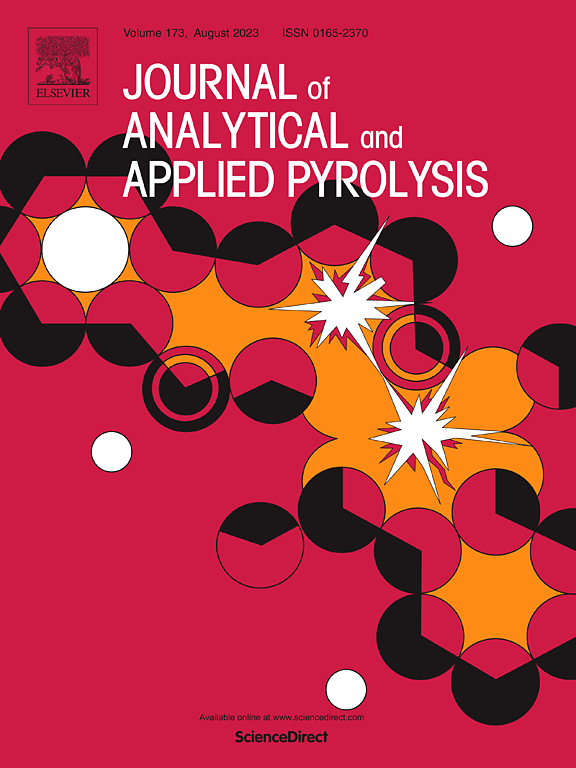在烟气和氮气气氛下通过热解获得的生物质生物炭的比较优势
IF 5.8
2区 化学
Q1 CHEMISTRY, ANALYTICAL
引用次数: 0
摘要
焙烧是一种广泛认可的热化学过程,用于将生物质转化为具有改善燃烧性能和增强可磨性的高能量生物炭。本研究对传统氮气(N2)焙烧和烟气FG焙烧得到的生物炭进行了对比评价,以探索生物炭的潜在应用前景。实验结果表明,FG焙烧降低了固体产量,提高了HHV,从而提高了能量密度。N2焙烧的生物炭收率为98.73 ~ 68.13 %,FG焙烧的生物炭收率为97.35 ~ %,54.73 %。此外,与N2热解相比,其比表面积更大,炭化程度更高,热解性能更稳定。N2条件下炭化指数为1.00 ~ 1.23,FG条件下为1.01 ~ 1.32。较高的HGI值和强相关性分析表明,无论何种焙烧方式,生物炭的可磨性与焙烧温度和碳质性质密切相关。FG条件下HGI指数为23 ~ 48,N2条件下HGI指数为23 ~ 45。这项研究强调了FG焙烧用于生物炭生产的独特潜力,提出了一种可持续的废物管理和碳封存方法。本文章由计算机程序翻译,如有差异,请以英文原文为准。
Comparative advantages of biomass-derived biochars via torrefaction under flue gas and nitrogen atmosphere
Torrefaction is a widely recognized thermochemical process for converting biomass into energy-dense biochar with improved combustion properties and enhanced grindability. This research performed a comparative evaluation of biochars obtained under traditional nitrogen (N2) torrefaction and flue gas FG torrefaction to explore the potential applications of biochars. The experimental findings indicated that FG torrefaction achieved a higher reduction in solid yield and HHV improvement, thus leading to a higher energy density. The biochar yield from N2 torrefaction ranged from 98.73 and 68.13 %, whereas FG torrefaction resulted in the yield between 97.35 % and 54.73 %. Additionally, compared to N2 torrefaction, a larger surface area, a higher degree of carbonization, and more stable pyrolysis properties were achieved. The carbonization index ranged from 1.00 to 1.23 under N2 conditions and from 1.01 to 1.32 under FG conditions. The higher HGI value and strong correlation analysis suggested that biochar grindability was strongly linked to torrefaction temperature and carbonaceous properties, irrespective of the torrefaction method. The HGI index ranged from 23 to 48 under FG torrefaction conditions and from 23 to 45 under N2 torrefaction conditions. This study highlights the unique potential of FG torrefaction for biochar production, presenting a sustainable approach to waste management and carbon sequestration.
求助全文
通过发布文献求助,成功后即可免费获取论文全文。
去求助
来源期刊
CiteScore
9.10
自引率
11.70%
发文量
340
审稿时长
44 days
期刊介绍:
The Journal of Analytical and Applied Pyrolysis (JAAP) is devoted to the publication of papers dealing with innovative applications of pyrolysis processes, the characterization of products related to pyrolysis reactions, and investigations of reaction mechanism. To be considered by JAAP, a manuscript should present significant progress in these topics. The novelty must be satisfactorily argued in the cover letter. A manuscript with a cover letter to the editor not addressing the novelty is likely to be rejected without review.

 求助内容:
求助内容: 应助结果提醒方式:
应助结果提醒方式:


